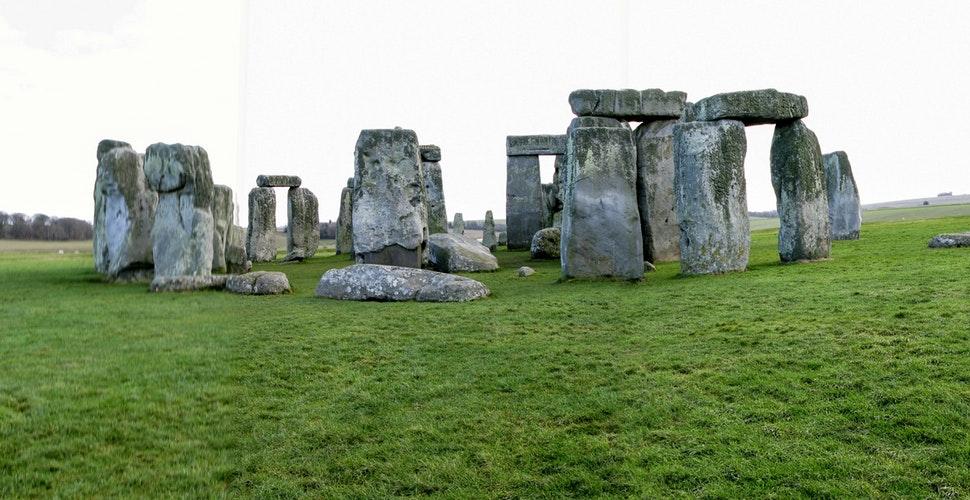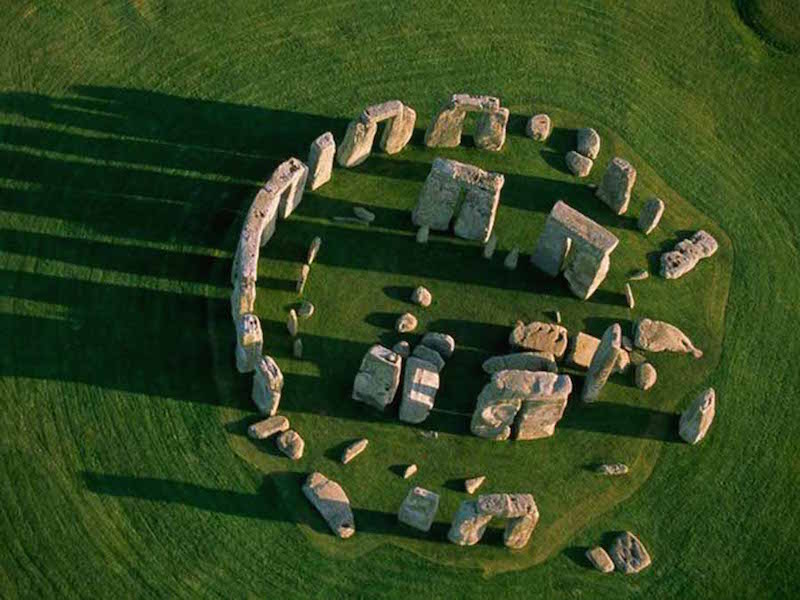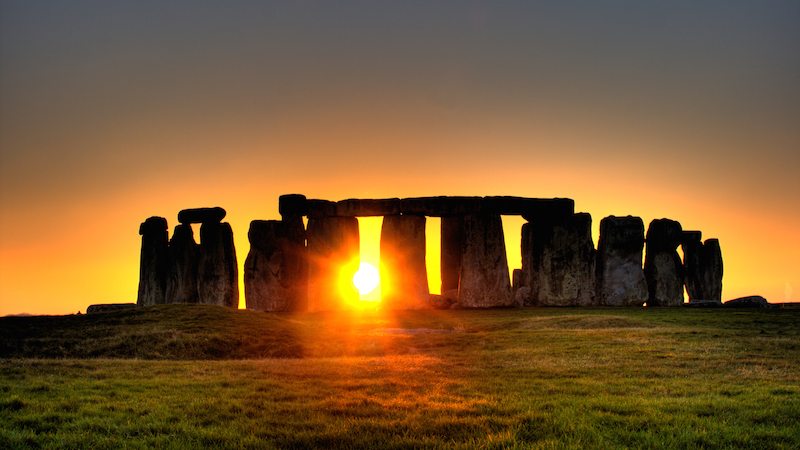Stonehenge
Episode #4 of the course “Mysterious World Landmarks”
On a plain in southern England, about 80 miles southwest of London, stands a circle of stones on a site that was first developed 5000 years ago. The circle, known as Stonehenge, is nearly 4500 years old, built up with stones from around 2500 BCE. Stonehenge is a symbol of the ancient world that continues to survive through the centuries, and theories about its design and purpose range from its history as a site of astronomy to a site of religious sacrifice. Stonehenge is so old that it was already in ruin and disrepair when the Romans first wrote of it in 55 BCE.

Built by unknown people from rocks carved out of the landscapes of England and Wales, there are two types of stones at Stonehenge: sarsens and bluestones. The gigantic sarsens, weighing 25 tons on average, were probably carved from quarries about 20 miles away, although experts aren’t sure. Many unfinished sarsens are scattered across England today. Bluestones originated in southern Wales, about 240 miles away, and are thought to have been transported to Stonehenge using both land and water routes. Although they weigh less—an average of 3 tons—they would have been transported uphill, which could have taken as many as 600 men at some places. Perhaps that is why local legends have sometimes attributed Stonehenge’s origins to giants.

While no one can be sure of its reason for being built, Stonehenge has attracted and awed people throughout the centuries. Declared as a World Heritage Site in 1986, Stonehenge now attracts nearly one million people every year. Because of the large amount of people who visit the site, the stones have been damaged over time not only by weather and natural conditions but by the erosions and vandalism of people as well. Now, visitors’ access is limited when they tour Stonehenge.
Share with friends

